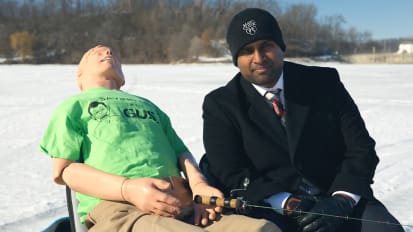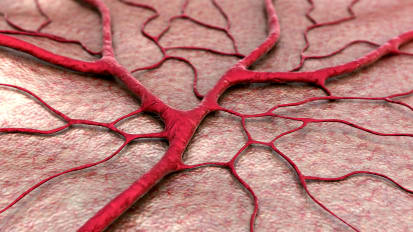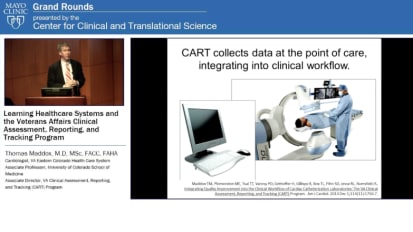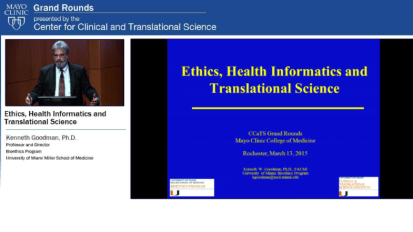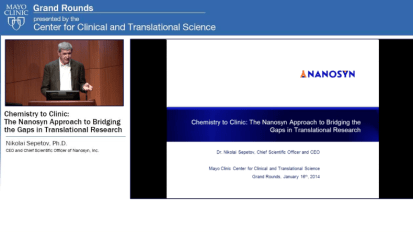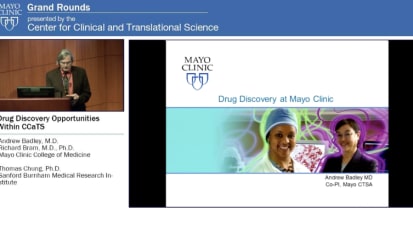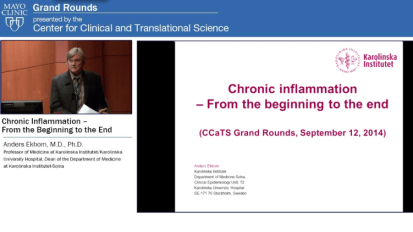JAMES L. KIRKLAND: In my clinical work as a geriatrician, one of the things that I and my colleagues often see is in older people is a condition that we call frailty. And that's us state that many people have seen in their older relatives, or other people with illness. Where individuals have trouble with their muscle strength. They have trouble getting around. They feel weak. And this syndrome, that we call frailty, is associated with very poor outcomes, and a lot of functional disability and distress for our patients. So one of the things that we want to do is to find some kind of treatment for this other than prescribing better wheelchairs, or walkers, or other kinds of things that we are stuck with now that are sort of Band-Aid solutions.
We started by taking senescent cells from people. Growing them in culture and flasks and looking at what they produced. And we found, as others had shown before us, that these cells were producing inflammatory factors and other things that could underlie frailty. So we looked at the pathways that could be involved in doing this and we noted that there a particular place in that pathway we might be able to direct drugs towards. That would prevent these cells from producing things that underlie frailty. So we did a lot of work in cell culture to begin with, using these particular drugs. Drag inhibitors, we call them. And we found that they resulted in decreased release of the factors by senescent cells. At least in culture dishes, that can underlie frailty. And these were human cells.
We next moved to testing whether these same drugs could be given to mice to reduce the kinds of factors that senescent cells produce. And we found that indeed was the case. And then we took this a step further and we looked at very, very old mice. Equivalent to 90-year-old people. And we did a bunch of things with those mice looking at whether they're frail. So we saw how they were able to run on a treadmill, or what their strength was like, what their activity was like. And we found that this aging most model recapitulated, or resembled in many ways the things that we see in human frailty.
We gave these drugs to those mice, to these very old mice that had this frailty syndrome. And we found really quite remarkable improvement in their function. And this, you know, lasted for a couple of months. It looks like it might be possible to use these drugs, and only these drugs that affect the things that senescence cells produce. But also drugs that we recently published even selectively kill senescent cells in mice. As a means towards moving towards treatments for frailty, and for the age related chronic disease that account for the bulk of morbidity, and health costs, and mortality in our population.
Were part of a network of 18 major aging centers across the US that we've helped to coordinate. We've got partners in the European Union working in the area as well. We're coming up with strategies as a group across the country and internationally to develop the way-- to develop approaches for doing clinical trials of drugs that target fundamental aging processes. In an effort to try to improve health span. Our goal is not to try to increase lifespan necessarily.
And certainly not to increase lifespan at all costs. Our goal is to try to enhance health span. The period during life when people are feeling-- are independent, free of chronic disease, and can do it they want basically. And don't rely on a lot of supports and aids. So this drug approach, and the others were developing, looked like they might hold some promise in reaching this goal.
